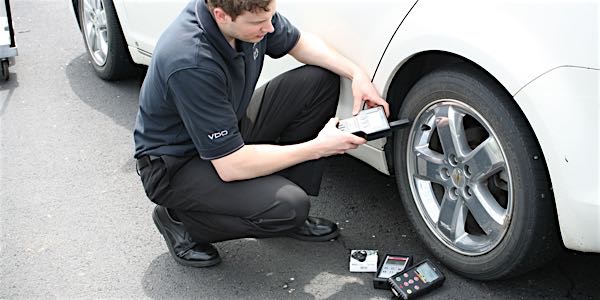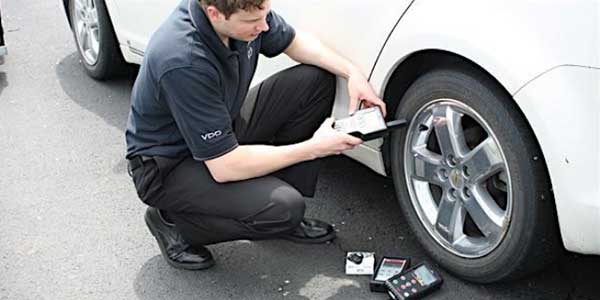
It might be tempting to think that your shop does not need to invest in a modern TPMS tool. You have probably serviced vehicles where only a button push or navigating a vehicle menu was required to start and complete a relearn procedure. Maybe, it does not matter on a lot of vehicles that do not require relearning the positions or self-relearn. But, don’t forget that you probably had to look up the correct procedure even if a tool was not needed to activate sensors or connect to the OBDII port.
What if you had that information in the bay? This is where a dedicated TPMS tool can help. Newer TPMS tools are a repository of information. The tool can identify the type of system you are dealing with, without having to look up the information on a computer. Some tools can even scan the VIN barcode to avoid having to enter the make, model and year.
The tool can identify how to access the buttons or menus in the infotainment system or driver information center and next steps. These databases include information such as if the parking brake needs to be set for the relearn procedure or if the spare tire has a sensor. This information is a productivity tool.
Another advantage of a tool is sensor replacement. Tools can often identify the correct replacement sensor across many brands. These TPMS tools can read weak or damaged sensors so the ID can be programmed onto a blank sensor. If a sensor is no longer transmitting, the tool can connect to the OBDII port and a new ID can be programmed into the TPMS module.
Another advantage of a dedicated TPMS tool is diagnostics. These tools can activate sensors and directly read what the sensor is transmitting. Some sensors can even transmit information like the estimated life of the battery. Also, an OBDII connection can communicate with the TPMS module to make sure it is communicating with other modules and read codes.
Anybody can make assumptions that a certain make or model requires a certain relearn procedure. Most of the time you might be right, but that one educated guess that is wrong could cost you lost time at best, or a comeback with the TPMS light on at the worst. Walking into any TPMS service with the right information in your hands can help to make the service profitable.
Article courtesy Underhood Service.














